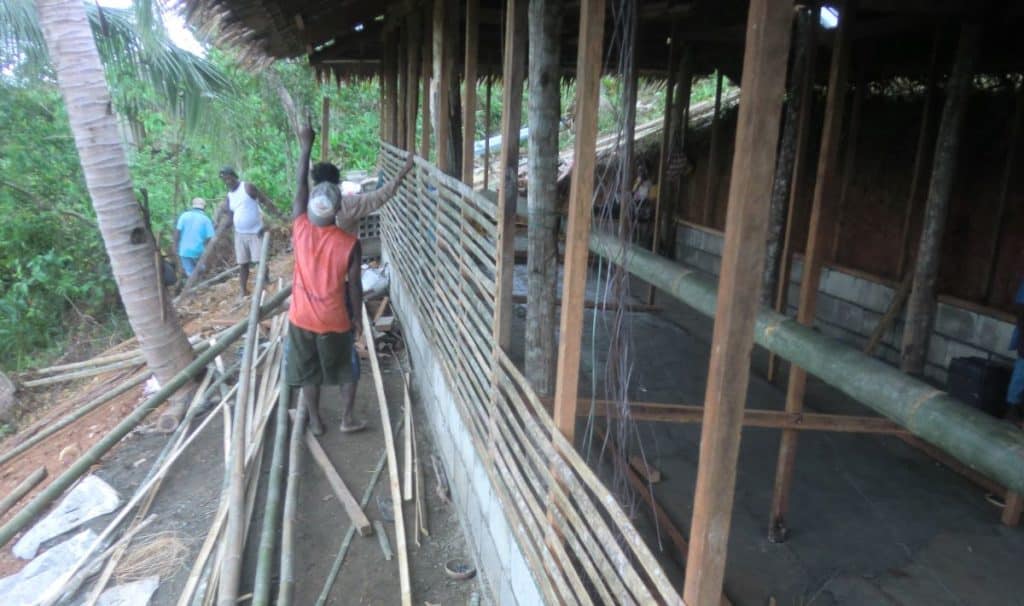Last Updated on July 5, 2023 by Ellen
I awoke early to rumbles of thunder and rain pelting the bedroom widows. A peek outside confirmed blowing precipitation from low gray clouds that extended as far as I could see.
I immediately wondered about the rebuilt mountaintop hen house we are financing here in Malay, Aklan on Panay Island, Philippines. There have been a few passing showers during construction, but this was the first serious rainfall since the project began nearly two weeks ago.
By 7:00 a.m. the work crew of indigenous Ati tribe members would arrive at the hilltop site. As I drifted in and out of sleep, I hoped conditions would improve by noon time when I planned to hike up.
Business on Boracay
Yesterday, I did not visit the job site. Instead we spent the day on Boracay – the internationally acclaimed, tourist beach island just a couple miles offshore of our current rental apartment where we are waiting out the COVID-19 crisis.
At the immigration office on Boracay, we extended our expired visas without penalty. We then used the rest of the day to tour the island and walk some of the picturesque beaches we were intending to visit when the pandemic lockdown began in mid-March.
All the while we enjoyed yesterday’s blazing sun on Boracay’s famous – and now shockingly empty – White Beach, we could easily see the mountain area across the water where we are sponsoring improvements and repairs to Ati food, water, and electric systems.
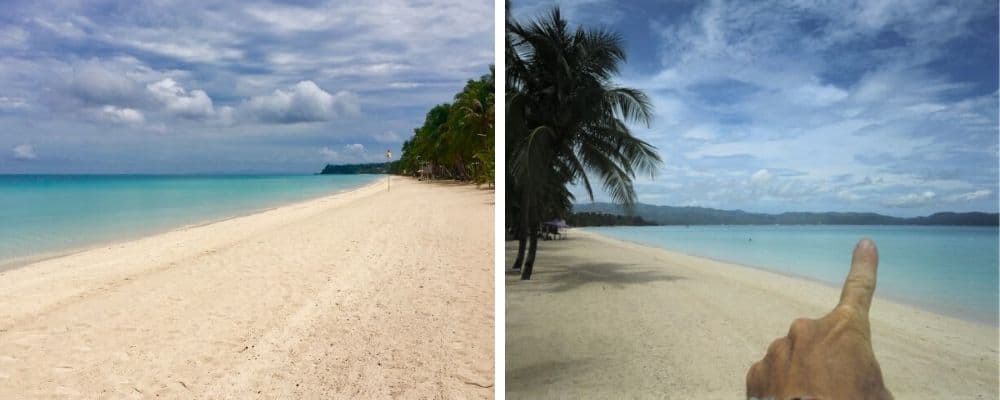
Ati hen house project
Today: overcast but pleasant. Humid but bearable. The morning rains subsided and only a few threatening clouds persisted throughout the day. The path up the mountain was mostly mud-free. But it was the winds that I noticed most on my 30-minute hike up to the Ati chicken house.
Winds & wet weather
At just a few hundred feet of elevation the tall coconut trees were rustling and whooshing wind gusts plainly heard. Again I couldn’t help but wonder about the hen house structure ahead, especially the roof made of layers of nipa leaves. It will have to withstand far greater winds in the future, but today was a first test.
On the usual approach to the work-site from below, I heard hammering and Tagalog language conversation and laughing before I could even see the activity. When it did come into view, I was slightly relieved to see everything in place and work progressing as normal.
After greeting various crew members and taking a few photos, I continued up past the hen house to a higher ‘staging area’ for supplies where some logs serve as seating. Once again I noticed wind gusts in the trees around me – yet 25 to 30 feet lower, the hen house area seemed much calmer. I even walked back down and stood near the roof; calmer indeed. Nestling the structure into the hillside for weather protection seems to have worked.
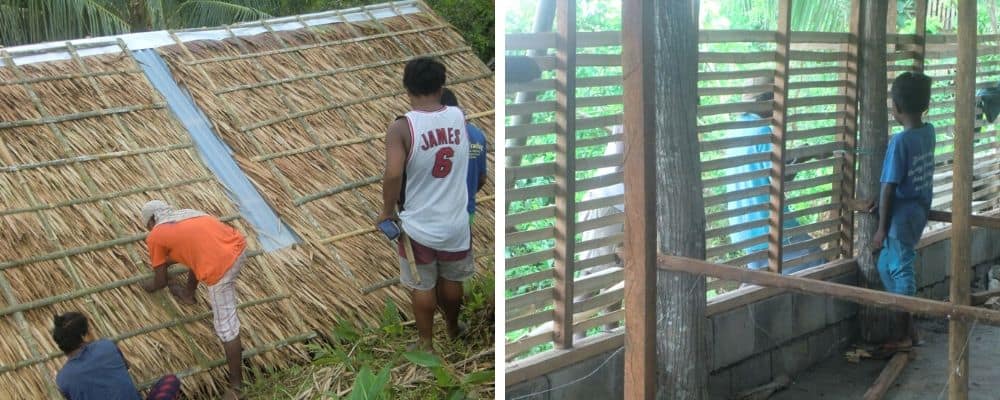
Close to the roof, I could also more easily see the lattice work of bamboo strips that had been added atop the nipa roof – obviously, to guard against high winds. It’s the kind of detail a city slicker from Cleveland, Ohio, would never think of. But the Ati know what is necessary and installed it automatically.
Incidentally, the roof looks very nice. And the nipa is the preferred material to assure the hen house does not get overheated in this sunny and steamy jungle climate. Aluminum or plastic sheeting – common on many structures here – would require extra measures for ventilation.
Daily progress
Aside from the roofing reinforcement, the small army of about 30 Ati workers busied themselves with other aspects of the building. Bamboo slats are being attached across the front face. Again, ease of air flow is important. (Picture on right side, above.)
Separately, a deep ‘septic tank’ is being dug and covered with a small bamboo and nipa structure. Cinder blocks and cement will be added in coming days to create a holding/drying area for chicken waste as required under local environmental codes.
Another requirement is the cement floor which was apparently installed while we were at Boracay. Disappointingly, the floor does not have the ‘grading toward center’ that I specifically discussed with the Ati chief, Ernesto. The missionaries from the US who have worked with the Ati in years past (and we are in email contact with) suggested the sloped floor for easier cleaning.
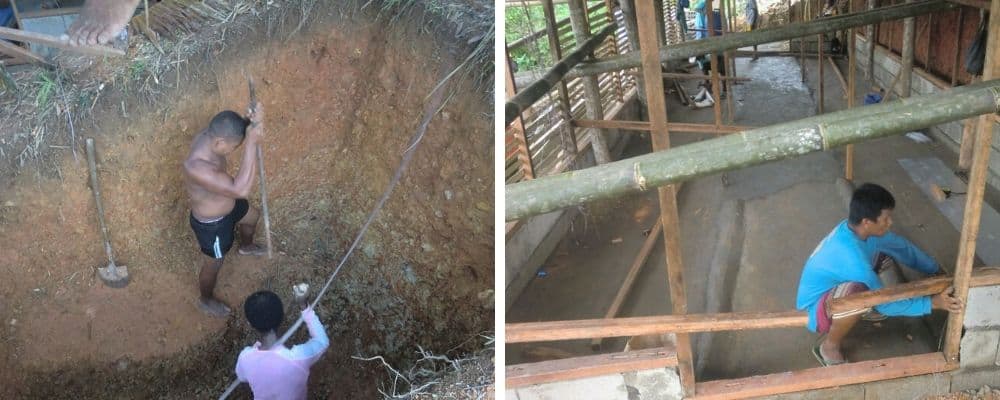
Wrapping up week #2 of Ati hen house project
Tomorrow (Saturday) will be the second payday for the people who are working on the Ati hen house project. We initially expected about 20 participants. Last week 29 individuals were on the payroll (not all work every day). This week the number of Ati workers is 43.
Thus, payroll will be somewhat higher this week. Still, with each person making just $5 per day for hot, difficult, physical labor, we are happy to pay. The project is getting done. The Ati are eager to work. And it is fulfilling to put cash in the hands of these folks at a time when other jobs are still scarce due to the pandemic slowdown.
Finally, yet another huge ‘THANK YOU’ to Earth Vagabonds readers, friends and family who recently made donations to this worthwhile cause. We are thankful for your care and generosity. Rest assured, your contributions will be a great help with the hen house and other Ati sustainability projects that are moving forward.
As always, be thankful and generous, happy trails & more beer.
Life is NOW!
Thanks for reading, “Ati hen house project: Slow, steady progress.”
TO ALL FINANCIAL CONTRIBUTORS: Please forward us your email address if you would like a weekly update with more ‘inside information’ and photos of the Ati projects in coming months. Over that time, we will also distribute ‘thank you’ photos as promised. Your contact info will be kept private – and no spam.
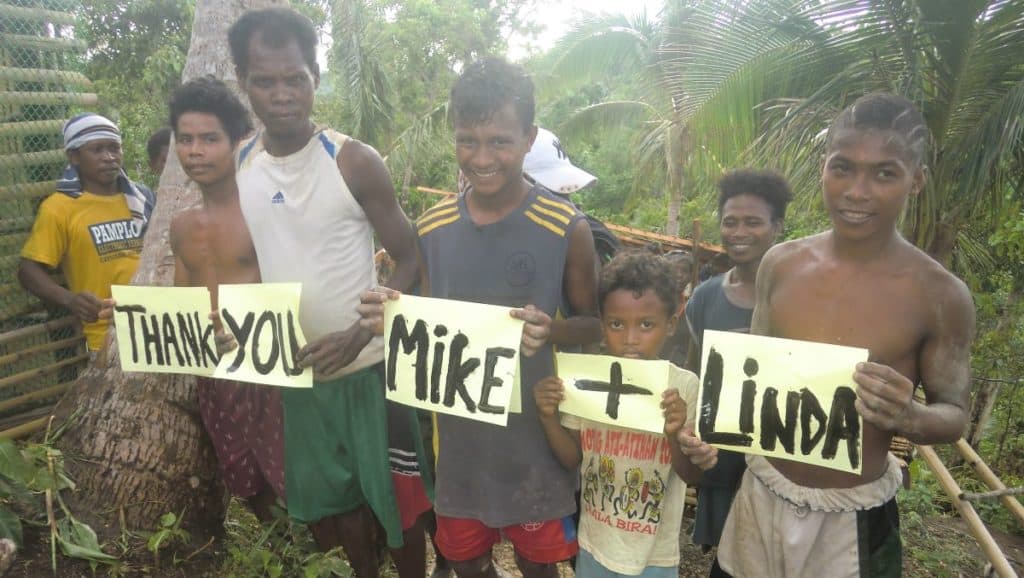
Earth Vagabonds advocate for travel once international borders reopen. Read more about our travel philosophy.
8 GREAT READS on other topics:
- Remarkable Komodo dragons in Indonesia
- Dazzling Giant Clams in the Philippines
- Adventure swim with whale sharks in Mexico
- Living on a floating house in Vietnam
- Caring for elephants in Thailand
- Volunteering at a refugee camp in Greece
- How to retire early and travel the world
- 4 steps to take for early retirement right now

